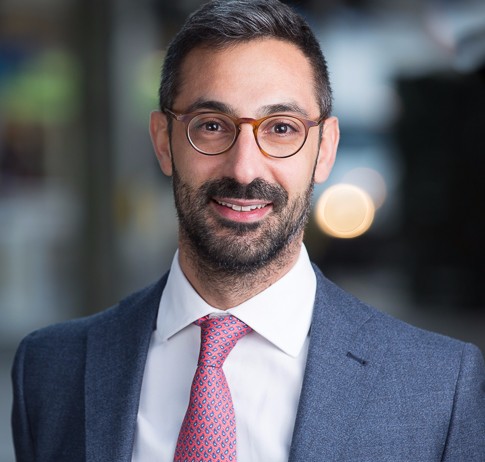Roberto
How are museums in Italy handling the situation? Do you have a sense of when the museums might reopen?
Giulia
Museums are re-modelling their activities in order to keep pursuing their central social role. In particular, many institutions have reconverted their collections digitally, allowing their public to visit ongoing exhibitions and discover new masterpieces. For example, Uffizi, in Florence now offer a virtual tour through its galleries, and so do other institutions like the Scuderie del Quirinale, in Rome where Raffaello: 1520 – 1482, one of Italy’s major exhibitions, was about to open last March. Furthermore, some directors such as Palazzo Strozzi’s Arturo Galansino, in Florence have started to updatee a blog on their websites to keep up with the public and share messages from important artists like Ai WeiWei or Marina Abramovic, who have recently exhibited at Palazzo Strozzi, in Florence.
Following the announcement of the Italian Prime Minister Giuseppe Conte, on 18 May the general reopening finally started. If this news could help with dealing with these hard times, allowing us to see the end of the tunnel, on the other hand some issues still need to be dealt with after the reopening.
First of all, by the 18th of May the conditions inscribed in some borrowing agreements, both with national and international institutions, have expired, and this means that many artworks now exposed in shut exhibitions have to come back to their original collections. In these cases, legal advice may be required to liaise with the museums functionaries to either extend those terms or request the return of the artworks. So far, the Scuderie del Quirinale have announced that their exhibition, an historical survey of Raffaello, will be prolonged. It is a great news, as it would have been a loss if it was canceled. Anyway, for some very fragile works such as drawings, it will also depend on the concrete conditions of exposition, which must not endanger them.
Another key aspect of the reopening is that the number of visitors will be reduced to guarantee health safety, thus making it more challenging for many museums and organizers to handle the flow of visitors. These extraordinary times may also put museums to the test, encouraging them to look for new ways to satisfy enthusiasts’ appetites while also reaching out to Academic visiting groups. These times could offer a chance to explore new territories and involve a wider public through digital means and make art more accessible to the non-industry specialists. In particular, new means of participation between public institutions and private investors should be investigated. In the meantime, cultural heritage's minister and other institutions such the ICOM has adopted safety guidelines to be followed by museums. Unfortunately, not all of them will be able to open due to restricted spaces, which do not allow social distancing.
In light of the above, the art industry together has teamed up with the fashion industry (which are amongst the sectors most impacted by the COVID-19 emergency) to move towards more digitalized solutions. In fact, the need for more digital events was already felt in the fashion industry even before this sanitary emergency.
Roberto
Have any changes to the Venice Biennale been discussed?
Giulia
The Biennale has always been a voice for contemporary times and this year is no exception, although in different ways. It would be no surprise if artists will address the effects the virus has had on our lives, social interactions, economies. Even though Cecilia Alemani (curator of the central exhibition) was doing her best to set up the exhibition, making virtual studio visits like many other curators did during the lockdown, we are sorry to hear that this year's architecture Biennale has been postponed to next year. Consequently, Art lovers and collectors will need to be patient and wait until 2022 to visit the art Biennale.
Withers has always been close to Biennale. Most recently, Withers Studio Legale has hosted in Milan an artwork made by the artist Flavio Favelli, who participated to a collateral exhibition during the 2019 Biennale.
Notwithstanding the postponement of this year's Biennale, it will still be possible to visit Venice and the city's major attractions.
Giulia
Has the government passed any legislation to support the art industry?
Roberto
Governments from all over the world have adopted rather extraordinary economic plans to mitigate the consequences of the virus on their economies to give their workers and professionals the help they need, with direct income support.
As to artists, we have an important precedent in history of a governmental plan to sustain arts and artists, which could be inspiring: the Federal Art Project, created in 1935 under the guidance of F. D. Roosvelt. Artists as important as Philip Guston or Arshile Gorky took part in it, while Jackson Pollock’s oeuvres were refused for being judged too abstract. It is not the case, now, for a similar working plan, but we still need economic provisions to foster our artists' incomes, in times where they can’t show their works in museums or commercial galleries.
In Italy, cultural heritage’s minister is working to provide artists with some financial restore, while some measures have already been adopted. For artists provided with VAT number, Law Decree n. 18/2020 allowed them to perceive 600 euros in March. The same Law Decree commits the entire 2019 SIAE rights' revenues to finance a fund devolved to authors and composers. Furthermore, tickets sold for shows and exhibitions can be exchanged for vouchers; while two additional funds have been set up to sustain the sectors of entertainment and cinema.
More recently, new measures have been adopted. A new decree contains further measures for museums and other cultural institutions, both private and public. In fact, a 210 mln fund was created for museums and other cultural institutions (such as art foundations) in private hands. Furthermore, the resources can also be spent to refund losses deriving from the cancelling of shows, fairs and other events (let's not forget that MiArt, one of Italy's most important art fair, was due to begin in April). As for public museums that will suffer from a reduction of tickets sales, the regularity of their activities will be assured thanks to direct state transfers. Tax credit related to investments in culture (so called "Art Bonus") will be extended to those made in favour of orchestras, circus and traveling shows.
The aforementioned law decree contains further important measures in connection with cultural heritage's protection and promotion. In fact, the article assigns 50 mln to foster investments in protection, fruition and digitalisation of national cultural heritage. It is worth highlighting that this article takes in consideration not only material cultural goods but also the immaterial cultural heritage. It seems that the Legislator finally recognized the notion of intangible cultural heritage as the ones inscribed in the UNESCO Convention for the Safeguarding of the Intangible Cultural Heritage and the EU Convention on the value of cultural heritage for society (the latter is about to be ratified by Italy, as for the UNESCO Convention, it has already been ratified). Moreover, a portion of the fund can be committed to guarantee investments in protection and promotion of cultural heritage.
In this changing context, adequate protection of IP rights as well as a careful tax and wealth planning become more and more important.
Giulia
How is the artist community doing?
Roberto
Many artists are adapting their activities to the new context. For example, Nico Vascellari, a prominent Italian performing artist, has enacted a 24h long online performance, bringing digitalization into the Italian art industry.
Another example of the connections between the art and fashion industry was provided by Vogue Italia that has sent copies of the April’s issue to 50 artists, asking them to imagine a new cover.
Finally, during the current COVID-19 emergency, the art industry has showed once again its continuous connections with the philanthropy world: many artists have responded to the call for solidarity creating new works to be sold and raise funds for the emergency. For instance, artworks by Cracking Art have been put on sale to raise money for the pediatric ward of Fatebenefratelli Hospital in Milan that has been converted for the cure of patients affected by COVID-19 virus.
Follow the link to view other Q&As in our The Art Market Adjusts Q&A Series.


